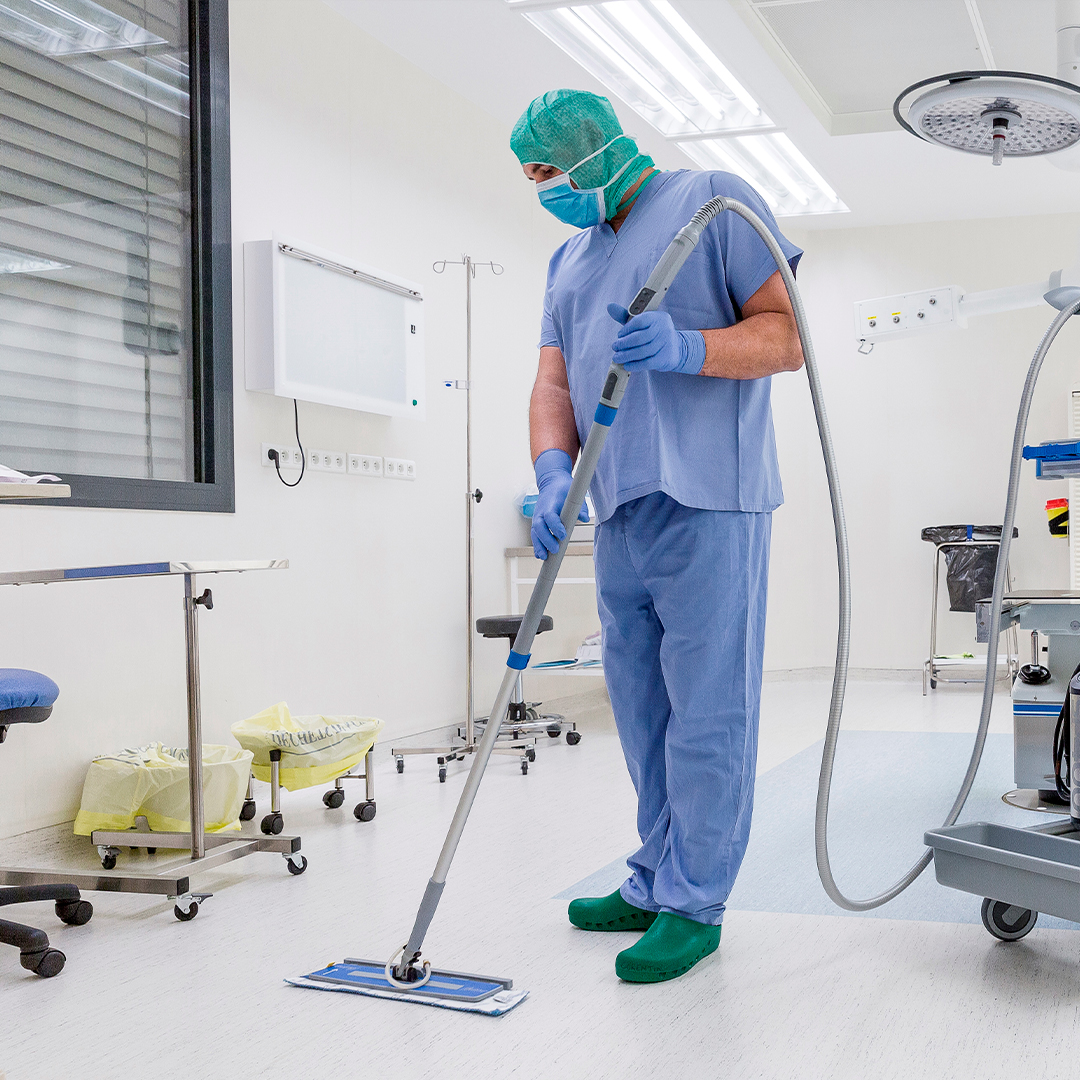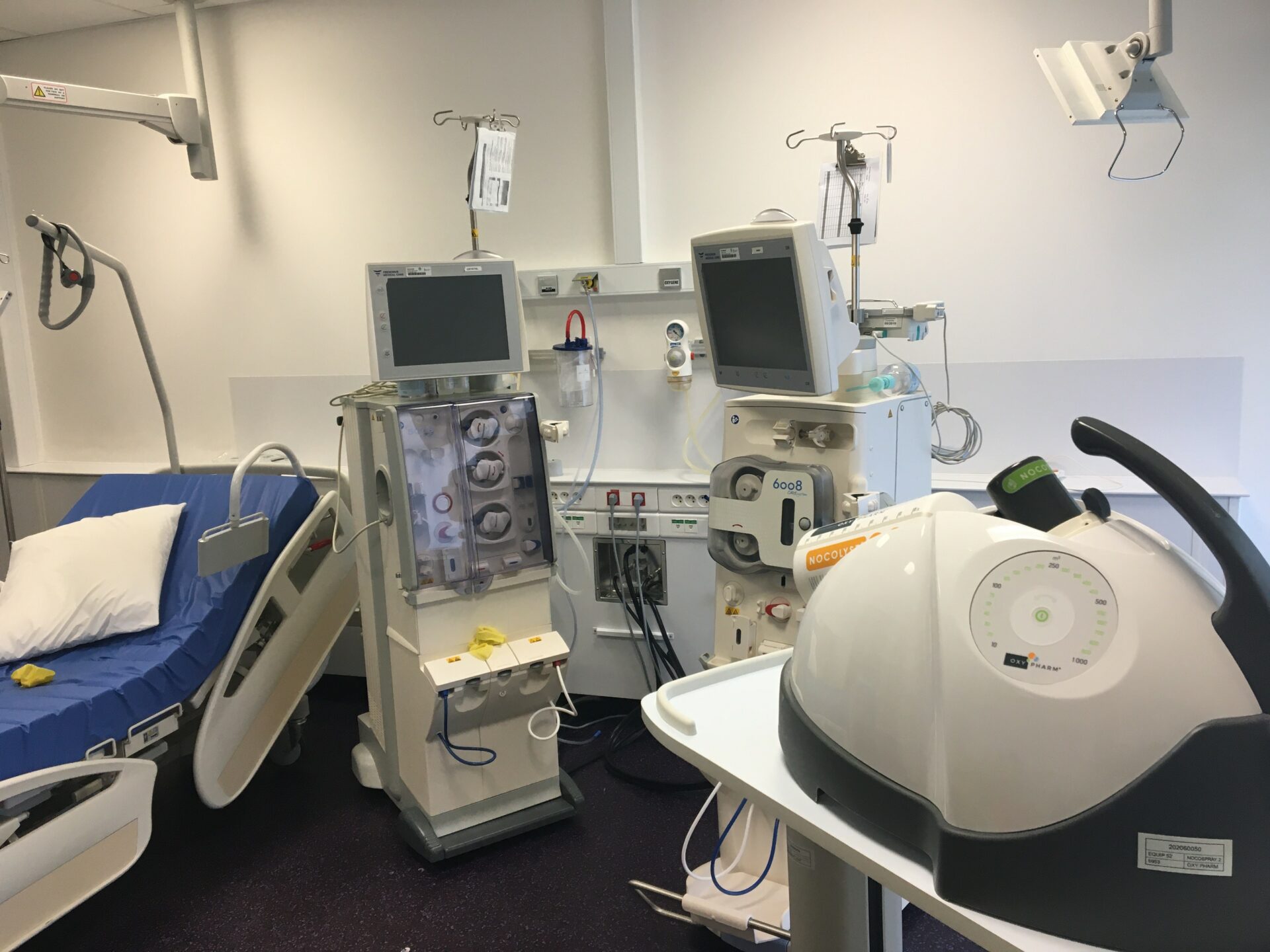Published in Hospitalia, the hospital innovation magazine
How can environmental risks be controlled without casting aside an eco-responsible approach? The Sarreguemines Hospital in Moselle seems to have found the solution thanks to Oxy’Pharm: the Sanivap steam bio-cleaning system and the Nocotech airborne surface bio-disinfection process are now fully integrated into its hygiene protocols, as explained by Doctor Corinne Denis, head of the hospital hygiene department, and Nadine Mertel, health executive.

In what context did you choose Oxy’Pharm’s solutions?
Dr Corinne Denis: Sanivap was chosen a few years ago to eradicate an outbreak of vancomycin-resistant enterococci (VRE). We had overcome this emerging highly resistant bacteria (eHRB), but then Covid arrived. We therefore expanded the indications for Sanivap, and also acquired Nocospray from the Nocotech range, two highly effective and complementary solutions.
How do they fit in with your hygiene protocols?
Dr Corinne Denis: For cleaning rooms, and within the framework of our standard precautions, we recommend the use of a classic detergent-disinfectant product, supplemented by Nocospray when the patient has been hospitalised for more than 15 days. However, in case of infectious risk (Covid, clostridium, etc.), our additional precautions mean we need to use Nocospray in addition to a sporicidal and virucidal detergent-disinfectant when the hospitalisation lasts longer than 72 hours. A specific protocol applies when the patient is a carrier of multi-drug resistant bacteria (MRB) or an eHRB: we then systematically combine Sanivap and Nocospray.
Nadine Mertel: At the end of last year, we also started using Sanivap alone for routine cleaning of operating theatres, which has significantly reduced the time between two procedures: whereas a detergent-disinfectant requires a 15-minute rest period, the steam treatment has an immediate effect. After a training period, the surgical teams have now adopted this alternative to chemicals – and are, above all, happy with its effectiveness.

What do you think are the advantages of these two processes, Sanivap and Nocospray?
Nadine Mertel: Sanivap provides unbeatable cleaning power: it produces very high temperature steam, which penetrates into the smallest spaces to remove dirt, deposits and biofilms. Not only are the surfaces visually clean, but some have also been refurbished after years of chemical disinfection.
Dr Corinne Denis: In the rooms, the Nocospray has considerably facilitated the task of the housekeeping staff, since it works without human presence. The disinfectant product is diffused in the form of a dry mist and distributed on all surfaces, including the most difficult to access such as the filters of the ventilation systems, which are no longer systematically changed in rooms that have received a Covid patient. These two solutions, which are perfectly respectful of the environment and therefore fully in line with our own eco-responsible approach, now enable us to effectively prevent the risks of cross-contamination.